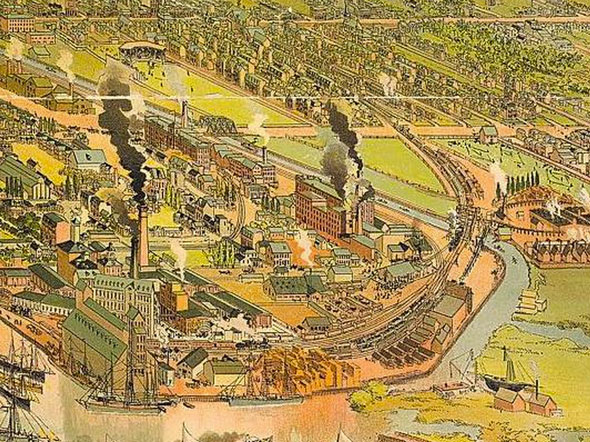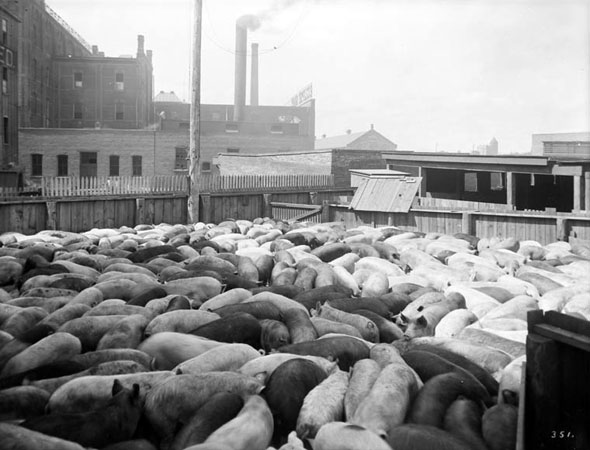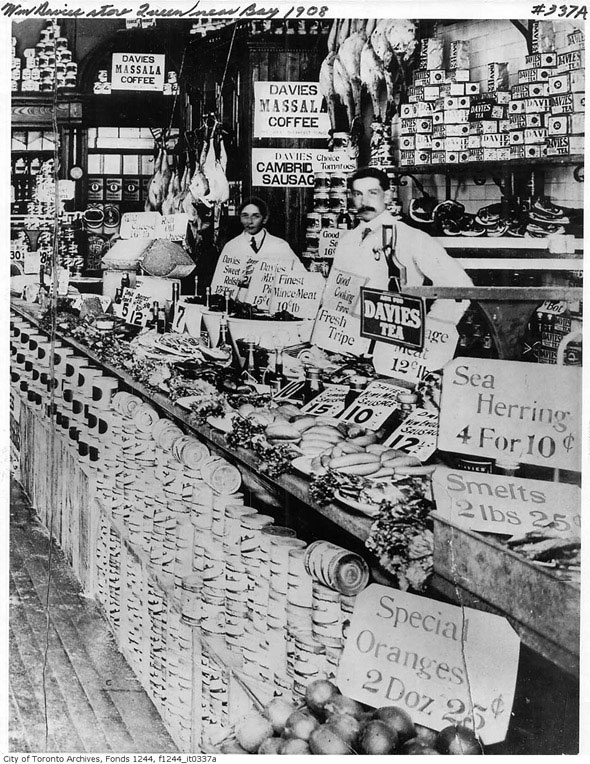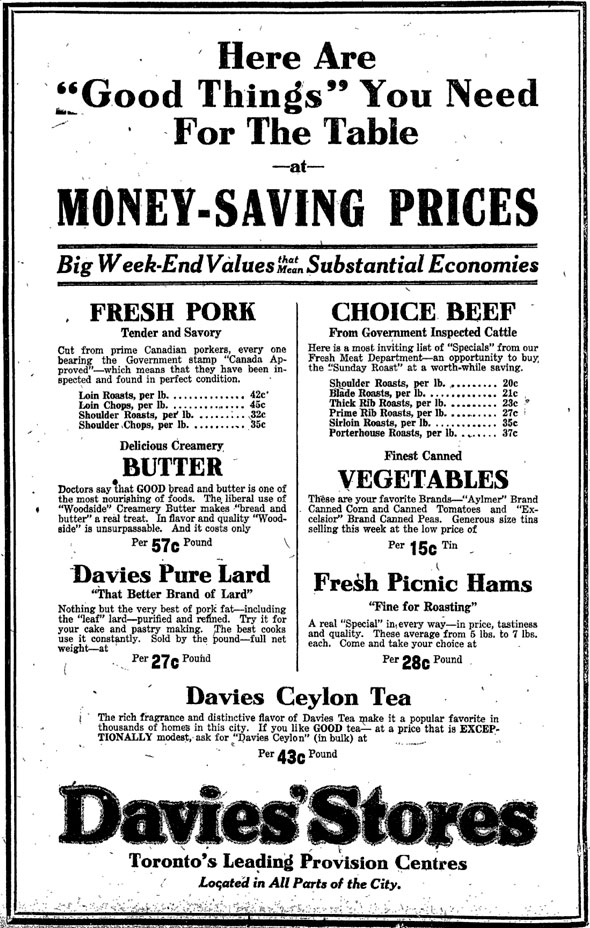
How Toronto got the nickname Hogtown
The story generally goes that Toronto was nicknamed Hogtown after the sprawling stock yards of the William Davies Company, one of Canada's earliest and largest meat packers.
Davies' processing plant, clustered in a jumble between the ragged ends of Front and Mill streets in the West Don Lands, slaughtered more than half a million pigs for export in 1900. The squeal from the crowded pens and the cured bacon they produced were famous in Canada and in the United Kingdom.
Toronto's most popular nickname, however, might not be a product of Davies' company after all. It turns out Ontario towns had been using the name to insult Toronto long before the city decided to claim the title for itself.

"Our friend the hog," the Globe editorial headline from June 23, 1898 read. "In the smaller cities of the Province when a man wants to say nasty things about Toronto he calls it Hogtown."
"The remark originally had no relation at all to our friend the hog, but was merely intended to convey an impression that the citizens of Toronto were porcine in their tendencies and had their forefeet in anything worth having," it said.
For most of its history, Toronto has been one of the largest cities in Canada, and if there was one thing the smaller cities resented it was a tall poppy, it seems. Toronto affairs dominated Queen's Park and took time away from other issues, much to the resentment of members of the legislature.
"Toronto bills have been before various committees of the legislature for two weeks, and on each day delegations of solicitors and aldermen have been supporting and condemning legislation proposed," wrote the Evening Star in 1896. "So much time has been taken up that Hon. Mr. Bronson proposed that all legislation respecting the city of Toronto be prohibited for a long term of years."
Instead of taking the insult as it was surely intended, Toronto seemed to grow attached to the monicker. "We are no longer desirous of putting aside the garland woven for us by our jealous neighbours," the Globe editorial declared.
"We accept it, and shall wear it blushingly on modest brows. For this is Hogtown, and growing more hoggy all the time."

That said, Toronto was home - albeit temporarily - to plenty of real hogs too.
In 1854, William Davies, an English grocer who had recently arrived in Toronto with his wife and first child, opened a faltering stall in the St. Lawrence Market, selling provisions and cured meats. The store, flanked by huge sides of meat, was based on a similar business Davies had run in his home town of Reading.
It wasn't until the grocer switched from retail to wholesale that things began to spark, however. A batch of cured hog sides he shipped to relatives in England in 1860 were a huge success, so he sent more. "I think you will say that the quality of the meat I send is as good as you ever saw," he wrote to his brother.
Davies rented and later bought a plant, the first in Canada, at Front and Frederick for the sole purpose of slaughtering, processing and curing the pork that he was convinced would be a huge success in the United Kingdom.
It was here Davies' company is credited with inventing another Toronto icon - peameal bacon. His butchers rolled the cured and trimmed loin in ground yellow peas, which were also part of the animals' diet, to help the meat make the trans Atlantic journey. It tasted pretty good, too.
The animals that left the port of Toronto bound for foreign plates were notably leaner than American porkers, and Davies encouraged breeders to raise animals to the specifications he knew would excite British palates.
Davies expanded his operation to a large plant near the mouth of the Don River, around where the southern tip of Corktown Common park is today. By 1874 he was shipping around 30,000 hogs a year, then almost triple that by 1888 - more than that of all his rivals combined. The outdoor pens were packed with shuffling muddy creatures, noisily awaiting their fate.
Once a Hogtown by accusation, Toronto's east waterfront was rapidly filling with pigs.

A store owner at heart, Davies once again tried his hand at retail. He opened a chain of stores, the first in Canada to be owned by a food producer, selling meat products - lard, sausage, tripe, chicken, fish, beef - but also Davies' own brand of groceries such as tea, coffee, eggs, butter, and canned vegetables.
Around the same time, his eyesight failing and two of his children sick with tuberculosis, Davies sold just under half of his company to Joseph Flavelle, an experienced retailer. It was under the control of this religious reformed drinker that the William Davies Company saw its biggest success.
By 1900 half a million cured hogs left the sprawling waterfront complex, which was now outfitted with an icehouse stocked by the frozen winter water of the Don.
The company hit its peak during the first world war, but a downturn in the 1920s forced a merger with several rival firms to form Canada Packers, the company that would evolve in to Maple Leaf Foods.
Davies met a somewhat ironic fate in 1920. Aged 90, during a car journey in the American south, the millionaire responsible in part for a longstanding Toronto nickname, its most famous snack, and a pioneering chain of grocery stores, stepped out to relieve himself by the side of the road.
Midstream, he was butted by a stray goat and fell to the ground. He died several months later as a result of his injuries.

City of Toronto Archives, Library and Archives Canada
Latest Videos
Latest Videos
Join the conversation Load comments







